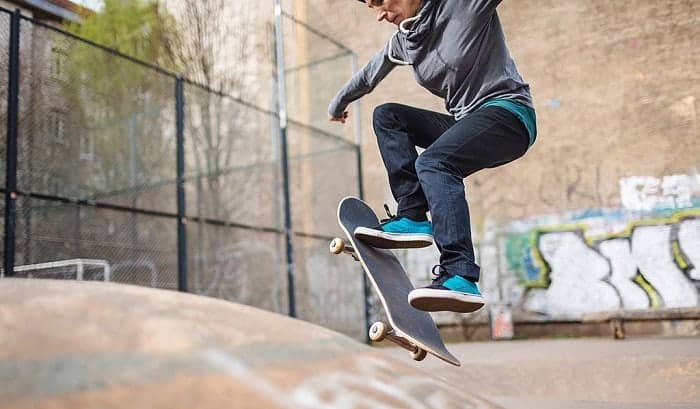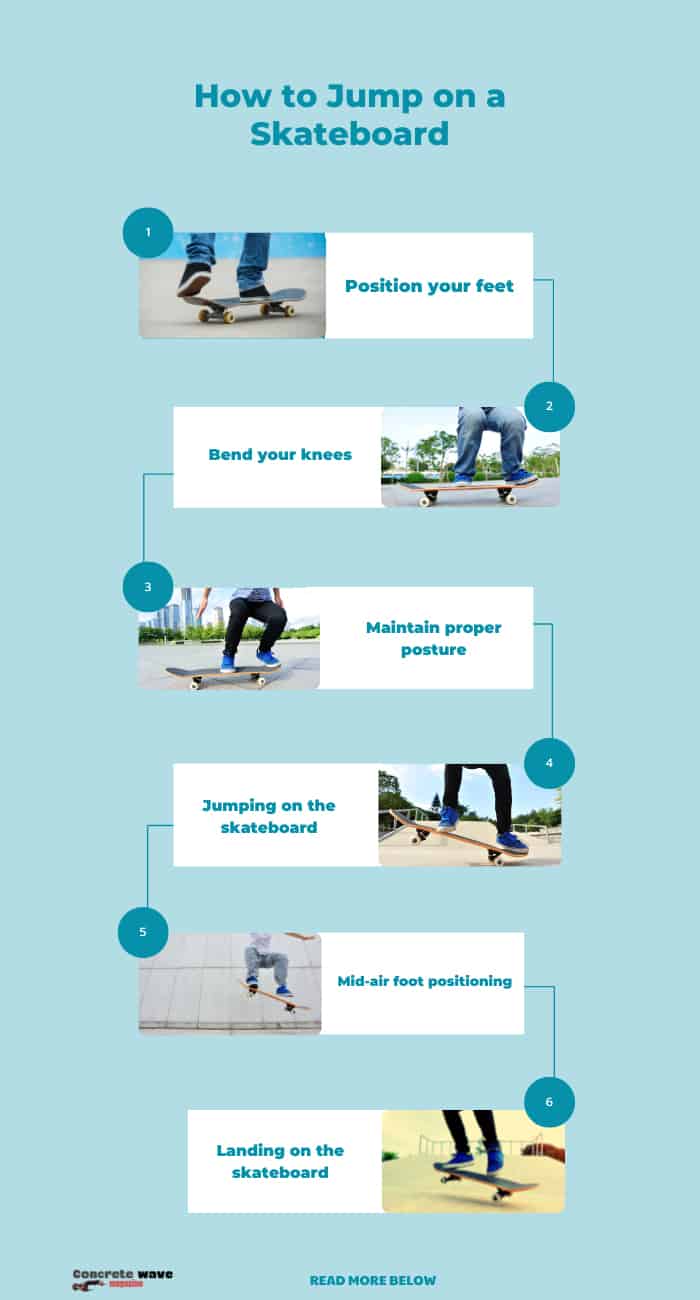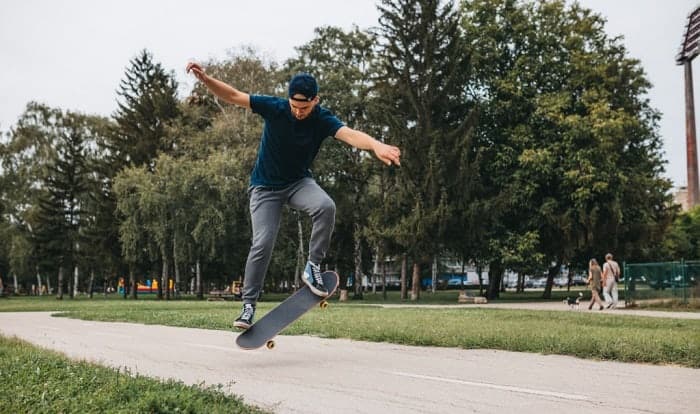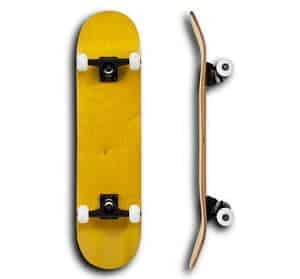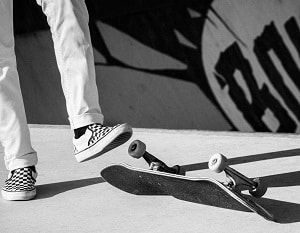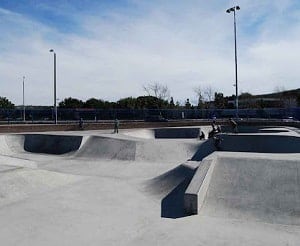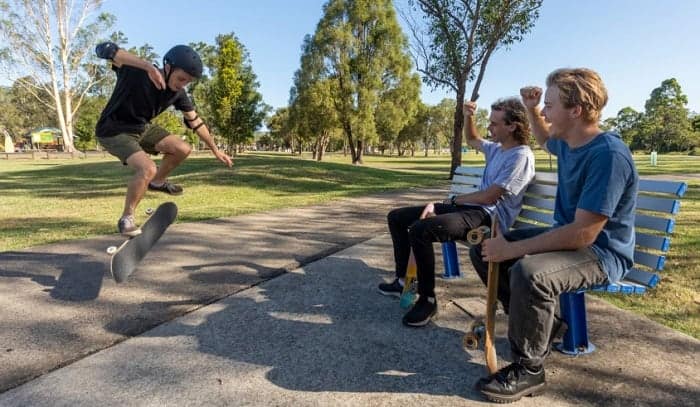Gliding is one of the easiest things to do with your skateboard. However, things would be different if there were uneven roads or cracks ahead of you. Riding at high speed could even impose danger if you do not know how to escape these obstacles.
Know how to avoid potential accidents by studying how to jump on a skateboard.
Consider these steps below to serve as your guide throughout.
- Position your feet.
- Bend your knees as you prepare to jump.
- Lift your front foot and bend your back foot’s ankle simultaneously.
- Land on top of the skateboard wheels.
Table of Contents
What You Will Need
Like doing any skateboard tricks, a complete set of tools helps you achieve your goals better. Consider the list below.
1. Your skateboard
You will have to do a lot of skateboards jumps and tosses with this trick. So, you have to prepare the most suitable skateboard for this purpose. When selecting a skateboard for jumping, be sure to check on its wheels and trucks. These two will be vital in dealing with tension and sudden weight changes on the deck.
Begin with the skateboard trucks. These wheel braces should have enough weight capacity and be durable to withstand impact. If you find your skateboard trucks a bit loose, tighten them to make you feel more stable, especially when landing on them.
Your wheels receive the most impact from jumping. And to make sure you maintain balance from mid-air, secure a set of wheels with a quick ground response and shock absorption. These aspects will also make it easier for you to find your core after jumping on your skateboard.
2. A pair of comfortable sneakers
Unlike casual skateboard riding without many tricks, jumping requires mechanical work on your entire body. You will have to bend your knees, ankles and make adjustments on air to ensure you land properly. One of the things to help you accomplish these is by having a good pair of sneakers.
When searching for skateboarding shoes, never forget to check on its sole as it helps you retain balance on the board by holding on to the grip tapes. A pair of shoes with soft cushions will also help reduce the impact of jumping.
And since you will have to work with your ankles more, make sure you pick a pair that’s not too tight. It’s also better to have shoes that are easy to adjust to relieve stress on your ankles.
3. Uncrowded skateboard park
Let me emphasize the importance of a less crowded skateboarding venue. In one park, you could be all practicing tricks as beginners. And one thing you have to avoid is to meet accidents along the way. Thus, make sure you perform skateboard jumping where you can move freely.
You need not get to a skateboarding park if you find it too inconvenient. A less crowded street may do. However, it would still be best to practice where ramps, curbs, and cracks on the road are present.
Steps on Jumping on a Skateboard
Skateboard jumping may take a while to master. Hence, be patient enough and consider the detailed explanation of the steps below.
Step 1: Position your feet
Let’s assume your skateboard is in a running state. Your front foot should be near the inner bolts of the front trucks. It should also be perpendicular to the direction of your skateboard.
Position your back foot on the skateboard’s tail. This step will help you later as you kick on the skateboard. Be careful not to place your back foot with barely half of your foot stepping on the tail. Ensure that your back foot’s position should be enough to make you snap on it the highest way possible.
Step 2: Bend your knees
Finding balance moving sideways can be difficult. Thus, to make jumping easier for you, try to bend your knees a bit to catch your core before jumping. Also, make sure your whole body is facing either side of the skateboard’s length, depending on the front foot you use.
A pro tip: don’t hesitate to spread your arms a bit to gain more stability. Even professional skateboarders loosen their elbows outwards to glide with the skateboard’s momentum from taking off to landing.
Step 3: Maintain proper posture
When bending your knees or opening your arms, never look down. Always keep your posture straight at an eye-to-eye level. Better posture also equates to better balance. Establishing proper posture also increases your confidence that you would no longer have to look down on your feet or deck every time.
Step 4: Jumping on the skateboard
The actual jumping on your skateboard requires sharp timing as your feet will have separate time frames for taking off. Begin by lifting your front foot. Do this simultaneously with your tail-kicking using your back foot.
This step sends your front foot upward at a higher level. Your back foot will seem to take off late since it will have to kick on the tail to send the nose of the board mid-air.
Step 5: Mid-air foot positioning
This step will require control as your goal is to land on the skateboard’s deck and not on the ground.
Your front ankle should bend a bit to let your leg and foot conform to the concave shape of the deck’s nose. That way, you will feel your front foot drag the skateboard’s nose forward through its grip tape. You can also use your front knee to guide your front foot.
Bend your back foot’s ankle a bit outwards after snapping the tail of the skateboard. Make sure your back foot does not go too far from the skateboard deck.
Step 6: Landing on the skateboard
Aim for the truck bolts of the skateboard. Landing on any part of the skateboard’s deck may damage the board due to impact or throw you off. Also, the most stable area of your skateboard is right above its wheels.
A pro tip: check on your peripherals to see whether you’re bumping into something. The first few landings on your skateboard may cause you to fall out of balance. So, make sure you can leave your board running without causing accidents.
Pro tips
- Practice skateboard jumping on a carpet in a stationary manner. This tip will help you lift your feet correctly and land when doing an ollie. You need not make your skateboard move.
- Try to jump without a skateboard to feel the motion expected when doing an ollie. Master the perfect timing between your front and back foot.
- Practice the first two steps interchangeably so you can get used to the feeling of jumping on a skateboard.
Conclusion
A skateboarder’s goal does not end by simply gliding on his board. Some users avail of skateboards for non-fancy purposes, but learning advanced skills will be helpful later on.
Knowing how to jump on a skateboard is one trick you might use even in emergencies on the road. Thus, always keep in mind the tips I have shared with you to ensure you’re doing things right.
Unleash the professional skateboarder in you. Did you like this article? Don’t forget to share your thoughts in the comments section.

I am Michael, and I have been enjoying this fun sport for seven years. And nothing is better than having a community to share our passion for those thrilling tricks. I am ready to tell you all I know about skateboarding, showing you how to choose a good board and trick to start and how the practice goes. Stay tuned!


